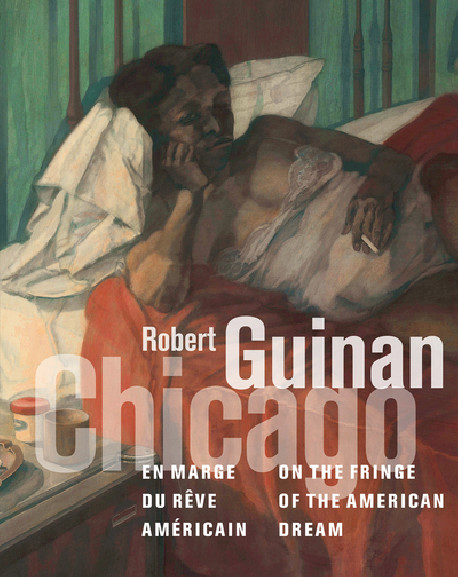No products
Product successfully added to your shopping cart
There are 0 items in your cart. There is 1 item in your cart.
Our webstore uses cookies to offer a better user experience and we consider that you are accepting their use if you keep browsing the website.

20th Century Painting
- New Art Books
- Exhibition catalogue
- Highlights
- Art Book Sale
- Museum's Shop & Gifts
- Bilingual art books and foreign editions
- Children's Books
- Art History
- Painting
- Architecture
- Sculpture
- Drawing & Engraving
- Photography
- Contemporary art
- Decorative Arts & Design
- Art Techniques
- Critics
- Entertainment art books
- Civilisations
- Partners Reviews
Robert Guinan - Chicago, on the fringe of the American dream
From the 1970s onwards, American artist Robert Guinan (1934-2016) painted the Chicago of the marginalized and excluded. With an attentive, realistic and empathetic eye. His work is part of a period that is also that of civil rights and protest movements in the United States, where the boundaries between communities were becoming more porous.
Shipped within 3 to 6 days
| Model | 9782359064094 |
| Artist | Robert Guinan |
| Author | Sous la direction de Bernard Blistène |
| Publisher | Liénart / Musée des Beaux-Arts de Lyon |
| Format | Ouvrage broché |
| Number of pages | 296 |
| Language | Bilingue Français / English |
| Dimensions | 290 x 230 |
| Published | 2023 |
| Museum | Musée des Beaux-Arts de Lyon |
Exhibition Catalogue Robert Guinan: Chicago, on the fringe of the American dream", presented at the Musée des Beaux-Arts de Lyon (June 2 - August 27, 2023).
Born in Watertown, a small town in upstate New York, Guinan graduated from high school in 1951. His military service in the Air Force in 1953 took him to Libya and Turkey. In 1959, he moved to Chicago to study art history, painting and photography at the Art Institute.
He began painting in the style of Abstract Expressionism and Pop Art, which dominated the art scene at the time. From 1965 onwards, he turned away from these styles, creating object-paintings in which collage was introduced. From 1970 onwards, he adopted a realist style, taking as his models deprived people of all origins, most often black, from the former ghettos and slums of Chicago.
The French public has been familiar with Guinan's paintings since the spring of 1973, when he had his first exhibition at the Albert Loeb gallery in Paris. But he remains isolated in his own country. Deeply attached to Henri Toulouse-Lautrec and Edgar Degas, he follows in the footsteps of Edward Hopper. But whereas Hopper portrayed anonymous figures, Guinan painted portraits, taking an interest in the lives of his models and befriending them.
The book presents some 50 paintings by American artist Robert Guinan (1934-2016), including bar scenes, urban landscapes, portraits and street and subway scenes, plus some 15 drawings and two series of lithographs, one on the theme of slavery, the other inspired by war poems by the great English poet Wilfred Owen, a pacifist who died on the front a few days before the armistice of the 1914-1918 war.
Recently viewed items













